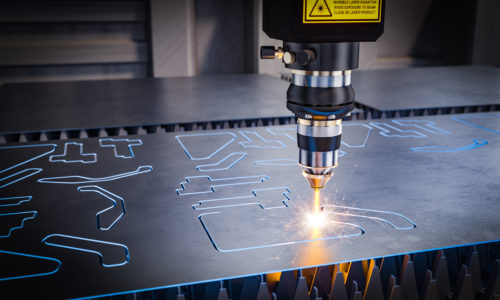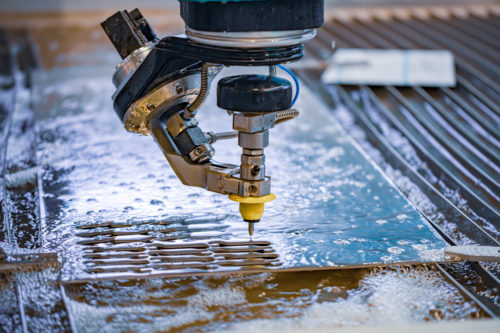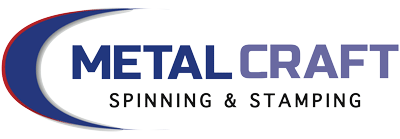You’ve probably heard of waterjet cutting and laser cutting, but how do you choose the right option for your fabrication project? This blog will cover the main distinctions between laser cutting vs. waterjet cutting, including their respective benefits and applications.
Laser or Water Jet Cutting – Which One Is Best for Your Application?
When deciding between waterjet vs. laser cutting, it’s important to know what each process involves and the applications that benefit from them.

All You Need to Know About Laser Cutting
Laser cutting is a precise fabrication technique that’s more energy-efficient than waterjet cutting. It has the ability to make cuts in multiple metal sheets at once, with a 0.002” tolerance. Although laser cutting equipment still requires manual programming, repairs, and inspections, the process itself is fully automated. Laser cutting requires a curved lens, nozzle, and compressed gas to produce a spherical, focused laser beam controlled by the program.
Five-axis laser cutting in particular allows for one-pass, highly repeatable 3D cutting of even the most complex geometries and features.
Main Benefits of Laser Cutting
There are multiple advantages of using laser cutting, including:
- Repeatable and precise 3D cutting
- Ability to cut workpieces into irregular or complex shapes with smooth edges
- Compatibility with metal and non-metal materials
- Produce cuts at high speed and efficiency, no need to retool
- Can cut narrow widths
- Minimal waste
Types of Materials Cut
Fabricators can use laser cutting to cut most types of metal and non-metal materials, like plastics, glass, wood, paper, and cardboard. This process also works with thin materials that might not work as well with other less precise cutting methods.
Main Applications
Laser cutting works with many applications, such as:
- Metalworking
- Medical devices
- Automotive parts
- Aerospace components
- Injection Moulding
- Packaging products
- Metalworking

A Primer on Water Jet Cutting
Another cutting method you might use is waterjet cutting. A waterjet cutter uses a solid stream of pressurized water to cut different types of materials. The water used in this method could include additional abrasive materials such as aluminum oxide or garnet.
Main Benefits of Waterjet Cutting
Waterjet cutting offers numerous benefits that make it a popular option in many applications, such as:
- Longer material life
- Safe operation
- Reduced risk of thermal damage and warping
- No overheating
- Accuracy
- Low waste production
Types of Materials Cut
Originally, fabricators used water jet cutting to cut paper and other delicate, thin materials. However, with recent innovations in water jet cutting technology, it’s possible to cut a wide range of materials of varying thicknesses, including metals, marble, stone, and ceramic.
Main Applications
Today, waterjet cutting is a popular choice in the aerospace, automotive, and construction industries. Specific components include:
- Metal gaskets
- Vehicle bodies
- Flanges
- Skid plates
- Turbine blades
- Engines
- Cabin panels
Which Cutting Method to Choose?
Both of these processes offer specific advantages that may make them ideal for certain applications. Waterjet cutting is less potentially damaging to the workpiece, while laser cutting offers optimal precision, repeatability, and efficiency, especially for 3D cutting operations.
Generally, laser cutting is often the better process to use in most cases. It offers a higher level of precision with a minimum cutting slit size of 0.006”, compared to the 0.02” minimum slit size of waterjet cutting. Compared to laser cutting’s tolerance of 0.002”, waterjet cutting’s tolerance is 0.008”. Furthermore, laser cutting involves minimal risk, cleanup, and waste production, which is why it suits many applications.
Premium Laser Cutting Services from Metal Craft
At Metal Craft Spinning & Stamping, laser cutting services are available for your application. Our new five-axis laser cutter can cut a variety of substrates with high precision and efficiency. When you work with us, you’ll benefit from our vast capabilities, which include:
- State-of-the-art equipment
- CNC automation
- Design assistance
- Customer-first approach
- Hassle-free shipping
- Quality assurance
- Flexibility
- Nearly 60 years of experience
Contact Our Experts Today!
Contact Metal Craft to discuss your unique needs or request a quote today.


